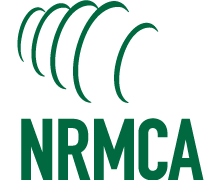
| Archive | nrmca.org | E-Store | Conferences & Events | Certifications | InFocus | Membership Directory |
Green Building Council Publishes Three New Resilience Pilot Credits After years of urging by NRMCA and other key stakeholder groups, USGBC has adopted LEED pilot credits that provided incentives for design teams to plan, design and build for resilience. NRMCA proposed a pilot credit in September 2013 and was connected with another group headed by Alex Wilson of the Resilient Design Institute, a longtime resiliency advocate who had submitted a pilot credit with similar goals. Through collaboration, the Alex Wilson group adopted some of the key parts in the NRMCA proposal, specifically dealing with hazard identification and design criteria in the FORTIFIED for Safer Business program. The three credits are:
1. Assessment and Planning for Resilience: In this credit, the design team must complete in pre-design a Hazard Assessment prerequisite to identify critical hazards plus at least one of two options of either Climate Resilience Planning or Emergency Preparedness Planning (1 Point). Click here for details.
2. Design for Enhanced Resilience: In this credit, the design team must design their project to specific design standards (including FORTIFIED for Safer Business) for the top three hazards identified in the Assessment and Planning for Resilience credit (1 Point). Click here for more details.
3. Passive Survivability and Functionality During Emergencies: In this credit, the design team must meet any two of the three options that include thermal resilience (livable conditions in a building after a disaster), back-up power or access to potable water (1 point). Click here for more details.
Although these credits only count for a single point each in LEED, this is typical for pilot credits. Once a pilot credit is implemented and vetted on actual LEED projects, they are often implemented as permanent credits and points assigned based on their overall impact regarding green building objectives which means points assigned to each credit could be increased.
For more information, contact NRMCA's Tien Peng at TPeng@nrmca.org or Lionel Lemay of NRMCA at LLemay@nrmca.org.
|
|
|








